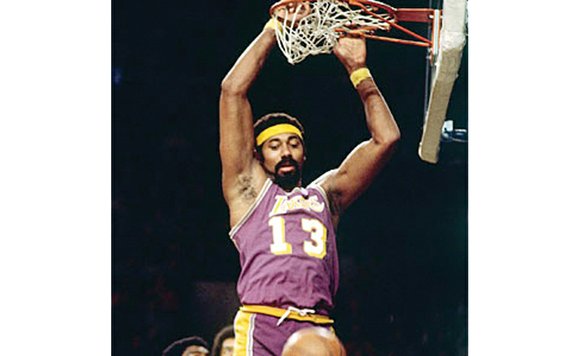NBA draft procedures changed the luck of the teams
Fred Jeter | 5/29/2015, 8:31 a.m. | Updated on 5/29/2015, 10:56 a.m.
Long before the NBA draft was determined by dancing Ping Pong balls, a.k.a. the weighted lottery, it was based on something less dicey — U.S. geography.
Between 1949 and 1966, the “territorial draft” was imposed as a way of ushering elite talent to pro clubs nearest their college fan bases — or in one special case, their hometown.
The NBA then was financially strapped and the “territorial” concept was hatched to improve attendance.
Perhaps the most prominent “territorial” victory was won by the Philadelphia Warriors in 1959, when colossus Wilt Chamberlain joined the NBA.
Chamberlain had been an All-American at the University of Kansas.
However, because there was no NBA franchise in Kansas, Philadelphia got “territorial” rights because Chamberlain starred at Philadelphia’s Overbrook High School.
As the Warriors’ newcomer in 1959-60, Chamberlain was MVP and Rookie of the Year while leading the league in scoring (37.6) and rebounding (27.0) averages.
NBA teams forfeited their first round draft pick — based on the previous year’s standings — in exchange for a “territorial” pick.
The tradeoff was well worth it. Of 23 “territorial” picks overall, 11 are now in the Naismith Memorial Basketball Hall of Fame.
Cincinnati had the worst record in 1958-59 and surely would have picked Chamberlain had he been from Ohio.
Other key “territorial” acquisitions were the University of Cincinnati’s Oscar Robertson by the Cincinnati Royals in 1960 and UCLA’s Walt Hazzard in 1964 and Gail Goodrich in 1965 by the hometown Lakers.
The whole system was revamped after 1966, with “territorial” picks eliminated. Until 1985, the team with the worst record selected first and the team with best mark picked last.
To guard against losing on purpose — called “tanking” — to get a top pick, the NBA devised the lottery.
A form of the lottery, as we know it now, was born in 1985, with Georgetown University’s Patrick Ewing selected by the New York Knicks, the team with the league’s third worst record that also picked first that year.
From 1985 to 1989, teams blindly — supposedly — selected envelopes from a glass container before Ping Pong balls were introduced.
Since 1990, the more losses a team suffers, the more Ping Pong balls it gets in the annual lottery, thus the weighted lottery. That increases the worst team’s chances of getting a top pick, but does not assure it.
Winning the Ping Pong ball jackpot this season is the Minnesota Timberwolves, which will pick first in the June 25 draft in Brooklyn, N.Y. The Los Angeles Lakers will go second.
The Timberwolves likely will select Karl-Anthony Towns from the University of Kentucky or Duke University’s Jahlil Okafor.
During the “territorial” draft era, Towns, from Piscataway, N.J., would likely wind up with the New York Knicks or Brooklyn Nets because Kentucky has no NBA team, and Okafor with the Charlotte Hornets.
There are 30 teams now. When Chamberlain was the “territorial” pick in 1959, there were only eight franchises.
Had the “territorial” concept continued, the face of the NBA would have looked much different over the years.
Examples:
• Philadelphia native Kobe Bryant likely would have gone to the 76ers,
• Michigan State’s Magic Johnson to the Detroit Pistons,
• Indiana State’s Larry Bird to the Pacers,
• Georgetown’s Allen Iverson to the Washington Wizards and
• Atlanta high school sensation Dwight Howard to the Hawks.
The University of North Carolina’s Michael Jordan entered the NBA in 1984, before the birth of the Charlotte professional team.
As it turned out, Akron, Ohio, native LeBron James went to nearby Cleveland in 2003 anyway because the Cavaliers had the first pick based on the team’s lowly previous season and Ping Pong luck.
James was among those players bolting straight to the NBA from high school.
The NBA’s Collective Bargaining Agreement imposed rules in 2006 requiring athletes to be “one year removed” from high school before entering the NBA.
That rule has resulted in controversial college “one and dones” — a system many feel has more flaws than the former “territorial” picks.







